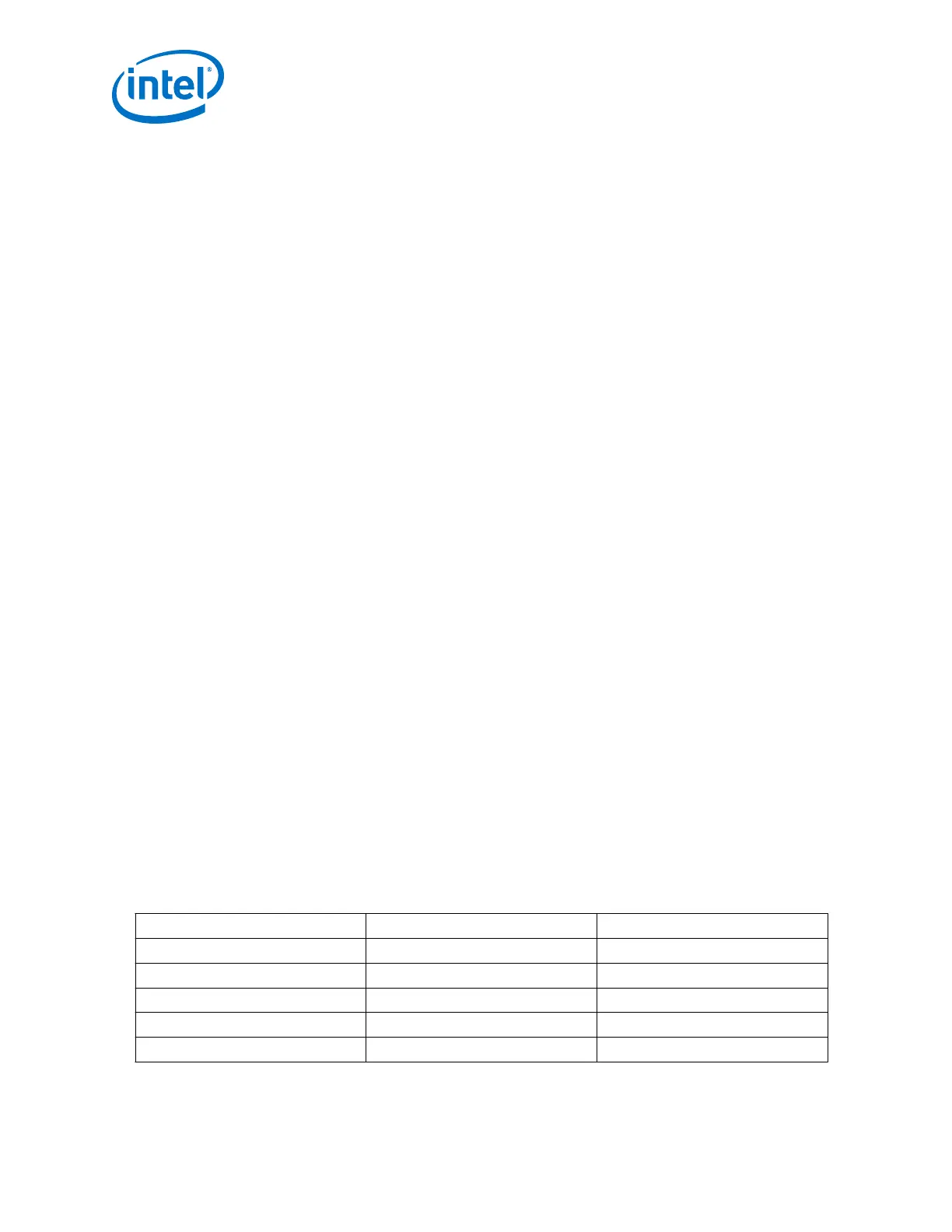64B/66B Encoder Reset Condition
The tx_digitalreset signal resets the 64B/66B encoder. During the reset
condition, the 64B/66B encoder does not output any signal in contrast with the
8B/10B encoder.
5.2.1.5. Pattern Generators
The Arria 10 transceivers contain hardened generators and checkers to provide a
simple and easy way to verify and characterize high speed links. Hardening the
pattern generators and checkers save FPGA core logic resources. The following pattern
generator blocks are supported in Arria 10:
• Pseudo Random Binary Sequence (PRBS)
• Pseudo Random Pattern (PRP)
Note: The pattern generators and checkers are supported for non-bonded channels only.
The pattern generators or checkers are enabled by writing to the respective register
bits of the Transceiver. Refer to the Reconfiguration Interface and Dynamic
Reconfiguration chapter for configuration details.
Related Information
Reconfiguration Interface and Dynamic Reconfiguration on page 502
5.2.1.5.1. PRBS Pattern Generator (Shared between Enhanced PCS and Standard PCS)
You can use Arria 10 pseudo-random bit sequence PRBS generator to simulate traffic
without developing or fully implementing any upper layer of a protocol stack. The
PRBS generator in Arria 10 devices is a shared hardened block between the Standard
and Enhanced datapaths through the PCS instead of being two unique instances: one
for Standard PCS and one for the Enhanced PCS. There is only one set of control
signals and registers for using this feature. The data lines from the various PCSes and
shared PRBS, are muxed before they are sent to the PMA. When the PRBS generator is
enabled, the data on the PRBS data lines is selected to be sent to the PMA. At any
instant, either the data from the PCS or the data generated from the PRBS generator,
is sent to the PMA.
The PRBS generator can be configured for two widths of the PCS-PMA interface: 10
bits and 64 bits. PRBS9 is available in 10-bit and 64-bit PCS-PMA widths. All other
PRBS patterns are available in 64-bit PCS-PMA width only. The PRBS generator
patterns can only be used when PCS-PMA interface width is configured to 10 bits or 64
bits.
Table 254. Supported PRBS Patterns
PRBS Pattern 10 bit PCS-PMA width 64 bit PCS-PMA width
PRBS7: x
7
+ x
6
+ 1 Yes
PRBS9: x
9
+ x
5
+ 1 Yes Yes
PRBS15: x
15
+ x
14
+ 1 Yes
PRBS23: x
23
+ x
18
+ 1 Yes
PRBS31: x
31
+ x
28
+ 1 Yes
5. Arria 10 Transceiver PHY Architecture
UG-01143 | 2018.06.15
Intel
®
Arria
®
10 Transceiver PHY User Guide
466
